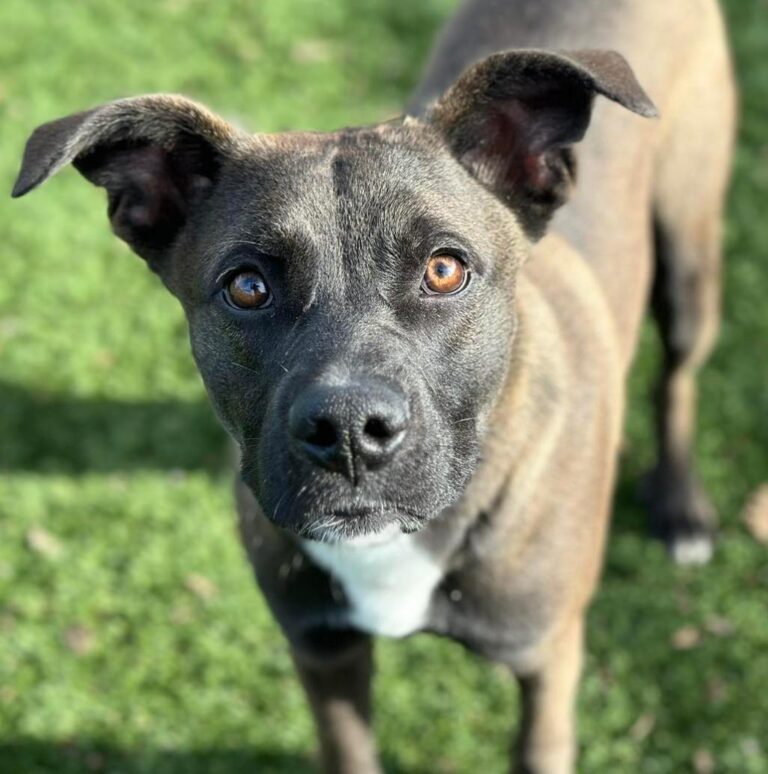Comet is just a one-year-old mixed-breed boy, but he has been at the shelter for almost five months. Comet is friendly and loves other dogs and people. If you are interested in this wonderful companion, please contact the Tehama County Animal Shelter at 530-527-3439. (contribution)
First aid, simply put, is the initial treatment given in the event of a medical emergency. The ultimate goal is to save life, reduce pain, and minimize the risk of permanent disability.
As the weather gets warmer, families and pets are participating in more outdoor activities, increasing the risk of accidents and unwanted injuries. That's why April has been designated National Pet First Aid Awareness Month, making it the right time for pet owners to get information about animal first aid. Will Fido or Fluffy suddenly start choking, get hit by a car, get stung or bitten, or eat one of the hundreds of easily available toxins?
Most likely not, but if you've ever had a cat or dog that suffered a life-threatening event, the possibility doesn't matter to you. What you do or don't do during those first critical moments can often mean the difference between life and death for your furry companion. Your veterinarian may not always be nearby, and the nearest veterinary office may be miles away or may be closed. Your only option is to provide your pet with the necessary emergency treatment yourself. There is no good reason not to prepare for emergencies.
Prevention is the first step in any plan. Be familiar with items that can cause accidental poisoning. Poisoning is one of the leading causes of emergency veterinary visits each year. The online ASPCA Poison Control Center ( https://www.aspca.org/pet-care/animal-poison-control ) provides information on protecting your pet from toxic substances. Additionally, the Pet Poison Helpline website (https://www.petpoisonhelpline.com/poisons/) lists many common pet poisons.
Prepare a basic pet first aid kit and keep it with you whenever you and your pet travel. American Veterinary Medical Association (AVMA) (https://www.avma.org/resources/pet-owners/emergencycare/first-aid-tips-pet-owners ) and the ASPCAPro site (https://www.aspcapro).org /resource/saving-lives-shelter-health-poison-control/how-make-pet-first-aid-kit ) provides great suggestions for building your own kit. If you already have one, be sure to check that it has not expired. You can also find small pocket “What to Do in Pet First Aid and CPR: Quick References for Dog and Cat Parents and Pet Professionals” and “Dog First Aid: What to Do in an Emergencies” by Dennis Fleck. Also consider adding a “What should I do?” reference guide. “It Happens” by Bruce Fogle. The kit should include a list of the medications your pet is taking (including drug name, dosage, and frequency of administration) and a copy of its medical records, including proof of all vaccinations. In the event of a serious emergency, it is essential to have all of your pet's important medical history readily available. If you need to go to an unfamiliar emergency veterinarian, knowing the animal's medical history will help provide better treatment.
Be sure to have other items on hand to help transport your pet to an emergency facility, such as a few blankets, a few towels, a leash, and a cat or dog carrier. If an unexpected emergency occurs, you likely won't have time to retrieve these items, so keep everything you need in a convenient place where you can quickly and easily access it.
Once you have assembled your kit and assembled additional items, be sure to understand when and how you will use the supplies, as well as standard emergency procedures such as the Heimlich maneuver and CPR. Your veterinarian should always be your first source for “how-to” instructions regarding your pet. However, his CPR video on AVMA TV (https://youtu.be/3JHdrojxzSw) and his PetMD video on Heimlich (https://www.petmd.com/dog/emergency/common-emergency/) His tutorials are also available online. e_dg_choking).
To function effectively in any emergency situation, the most difficult and most important thing is to remain calm and assess the entire situation. Try to keep the animal as quiet as possible and minimize movement. Keep in mind that the stress of being hurt can cause normally friendly dogs to become disoriented, panicky, or act aggressively. Although most animals respond to calm, soothing voices, it is important to ensure personal safety and use caution when handling injured animals. The University of California, Davis School of Veterinary Medicine will be offering a lecture by Dr. Simon Hagley through its media site, providing basic first aid tips for cats and dogs and what you can do to help your pet in an emergency situation. (https://healthtopics.vetmed.ucdavis.edu/health-topics/canine/first-aid-cats-and-dogs-lecture-video) is the best. I highly recommend watching it.
While we may be prepared to handle a human emergency, we may not be as prepared for a pet. Unfortunately, one day your pet may suffer from severe bleeding, suffocation, eye injuries, suspected broken bones, immobilized limbs, stings, snake bites, seizures, heat stroke, hypothermia, etc. (https:/ /www.merckvetmanual.com/special-pet-topics/emergency/emergency-care-for-dogs-and-cats). So this National Pet Emergency Awareness Month, it's important to learn what to do in advance and prepare for unplanned and very scary situations.


